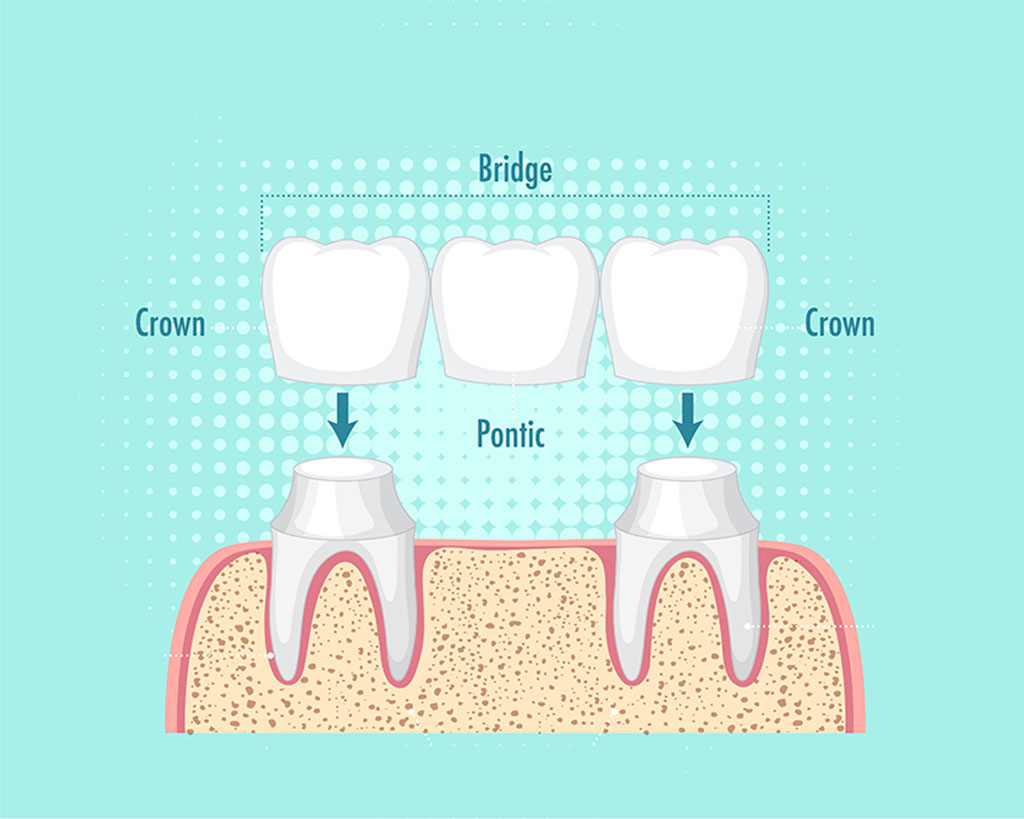Crown & Bridges
- Treatment
- Crown & Bridges

What is a crown?
Sometimes known as ‘cap’, crowns are the restoration of the teeth that have been weakened by infection or decay. Crowns are made from different materials, mainly porcelain, metal, gold, or a combination of these things.
A dental crown is basically a process where the dentist makes an impression on your tooth through a mold or digital scan. It usually takes 2 or multiple visits to the dentist where in the first visit the dentist builds a mold of the tooth that needs a crown. It then goes into the lab to be built and your tooth will have a temporary crown over it.
In the next visit, the dentist will remove the temporary crown and place the custom crown around it. They will then go on to check the conditions of the tooth and if everything looks fine, they will cement the crown on your tooth.
Types of crowns
All Porcelain Crowns
They are the most contemporary ones in the crowns. Made from ceramic or porcelain completely, they give a natural look to the teeth. As no metals are involved in the making of this crown, it is generally toxic-free.
Porcelain Fused-To-Metal Crowns
Porcelain fused-to-metal is another crown that is used widely because of its aesthetics and durability. Since they are made up of metal on the end with a porcelain body outside, it gets a high preference.
Zirconia Crowns
Zirconia crowns are basically a highly translucent material that is used to make crowns. Zirconium is the primary source through which these crowns are created. They are strong, long-lasting, and provide great aesthetics. It is most commonly suggested/recommended for the front teeth
Meta Crowns
They have an advantage of being exceptionally strong made up of stainless steel & other alloys. These crowns generally have high corrosion resistance. However, they cannot be color matched.
Bridges

The other way to replace missing teeth is through the procedure of Bridge. Bridges are usually made when the missing teeth are only on one side of the mouth. It is usually made up of metal or all-porcelain or zirconia.
Replacing the teeth could be for several reasons, appearance being the first. Another could be a gap between the teeth which could put a further strain on the teeth nearby. It could also cause the food to accumulate in the gap which could lead to tooth decay or infections soon.
